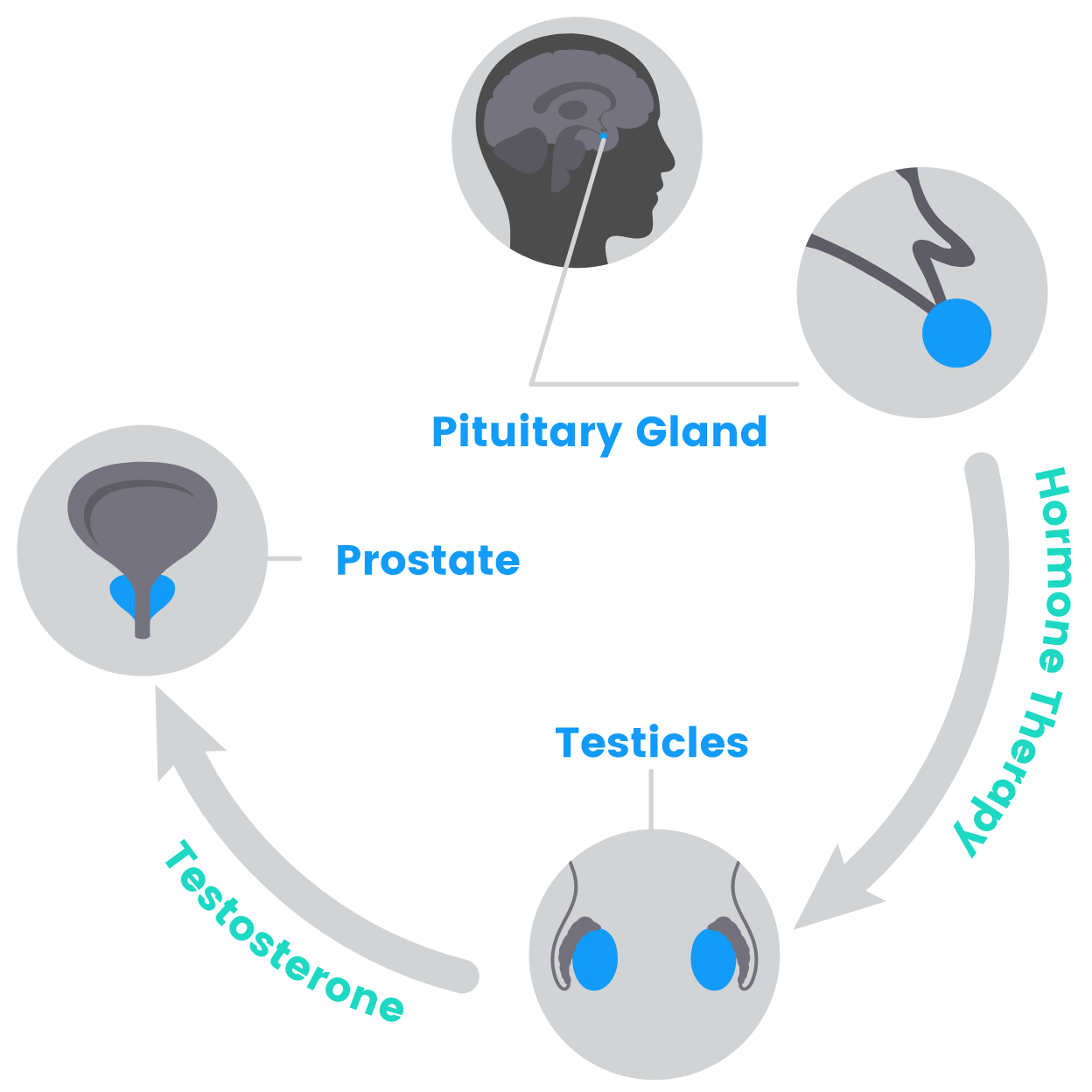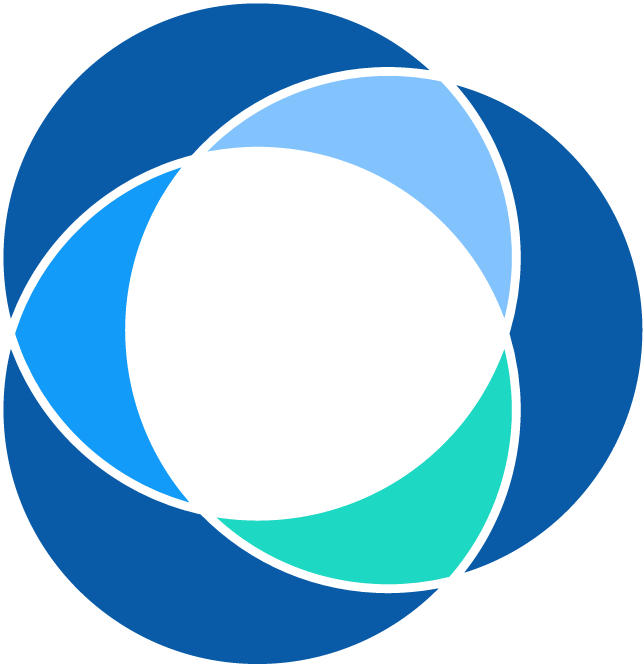If you are diagnosed with prostate cancer, your doctor may recommend hormonal treatments called androgen deprivation therapy (ADT). Over 80 years ago, a team of researchers discovered that the hormone testosterone drives prostate cancer growth. They learned that prostate cancer could be treated by decreasing levels of testosterone in the body of a man with prostate cancer.
How does ADT work?
In the past testosterone was reduced to very low or “castrate” levels by removing both testicles (bilateral simple orchiectomy). Today, most men who need ADT receive medications that do this medically, rather than by having surgery.
There is a complex signaling pathway between parts of the brain and the testicles that leads to testosterone production. This pathway may be broken by medications that affect the signals in the brain between the hypothalamus and pituitary glands. These are groups of medications called GnRH (LHRH) agonists or antagonists.
Another option is to use medication to block the effect of testosterone after it has been produced. These medications are called antiandrogens.
Using both of these groups of medications together is called “combined androgen blockade.”

Who might need ADT?
Androgen deprivation therapy may be used in many different circumstances in the care of men with prostate cancer.
ADT may be given at the same time as radiation therapy for men with cancer that is localized to the prostate gland. It also may be prescribed at the time of recurrent disease (cancer that has come back after surgery or radiotherapy).
Finally, ADT also may be prescribed for patients whose prostate cancer has spread or metastasized. In these cases of more advanced cancer, other treatments may be added to ADT. These other treatments could include chemotherapy or androgen receptor inhibitors (ARIs).
What can I expect when starting ADT?
The GnRH (LHRH) agonists and antagonists are the most commonly used forms of ADT. They are given as shots either just beneath the skin or into the muscle. These shots may be given every month, every 3 months, every 4 months, or every 6 months.
One of the newer approaches is a pill taken daily (relugolix or also known as Orgovyx). Anti-androgen medications are pills taken daily.
ADT may have many effects on your body, some of which you will notice right away and others you may not. Many men experience hot flashes, much as women do when going through menopause. Fatigue is also common as is a loss of libido, or sexual interest. Over the longer term, ADT can lead to depression and perhaps early dementia. It can also affect your body’s composition by increasing body fat and decreasing muscle mass. Additionally, it can have effects on your blood pressure, cholesterol, blood sugars, and your bones (weakening, or making them more brittle).
Make sure to tell your primary care doctor you are on ADT. This way they will know if they need to give you any tests to find out if you need medications to counteract the effects of ADT. These might include high blood pressure, high cholesterol, and/or diabetes medications. Also, because of how ADT affects the bone, it is important for men on ADT to take calcium and vitamin D regularly.

